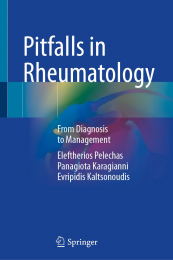Non ci sono recensioni
|
||||||||||
|
||||||||||
|
||||||||||
Table of Contents:
I. Ocular vasculature, anatomical structure and function
1. Anatomy (different illustrations on anatomical structures in the orbit)
a. Description of vasculature (and anatomic variations) beginning from the heart to the ophthalmic vein
b. Innervation
2. Vascular physiology: Controls in general terms
a. Innervation
b. Autoregulation (e.g., intracular pressure)
c. Relationship between blood pressure and blood flow in these vessels
d. Intraocular pressure and blood flow to these vessels
e. Different influencing factors (e.g. mediators of vessel dilation, vasoconstrictors) with diagrams showing affection of vessels
3. Pathophysiology
a. Loss of innervation (Horner syndrome
b. Ion channel dysfunction (theory)
c. Vasospasm (clinical observation, cold hand, migraine, raynaud)
d. Gas perturbations (hyperoxia, hypoxia, hypercapnia) and pharmacology
II. Principles of technology (including diagrams)
4. Ultrasound
a. Physical basics and anatomical description with illustrations
b. History/early measurements
c. Contemporary measurements
d. Clinical examples
5. Angiography
a. Physical basics and anatomical description
b. History/early measurements
c. Contemporary measurements
d. Clinical
6. Laser Doppler technologies
a. Physical basics and amatomical description
b. History/early measurements
c. Comtemporary measurements
d. Clinical examples
7. Pulsatility based techniques
a. Physical basics and anatomical description
b. History/early measurements
c. Contemporary measurements
d. Clinical examples
III. Principal applicability to diseases (examples of altered circulation)
8. Glaucoma (visual acuity, contrast sensitivity, visual fields, blood flow)
a. POAG
b. NTG
c. CACG
d. Other; one image per subdivision
9. Age-related macular degeneration
a. One photo per stage, beginning with pigment shift, ending with subretinal meovascularization
10. Diabetic retinopathy
11. Arteriitic and non-arteriitic ischemic neuropathy
12. Vascular occlusions
a. Arterial occulusion
b. Vein occlusion
c. Partial vessel occlusion (one-vessel-branch)
d. Remaining macular vessel
13. Infections
a. Histoplasmosis
b. CMV
c. Toxoplasmosis
d. Any other infection related to blood flow disorders
14. Degenerative diseases
a. Retinitis pigmentosa
b. Any other disease related to vascular disorders (eg, vaskulitis)
IV. New techniques and their future application





